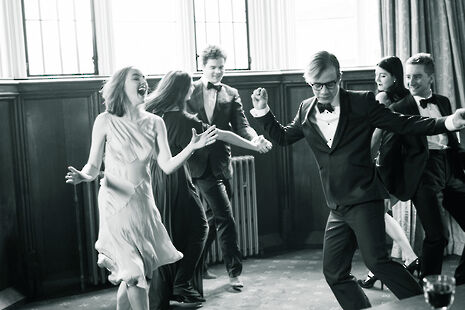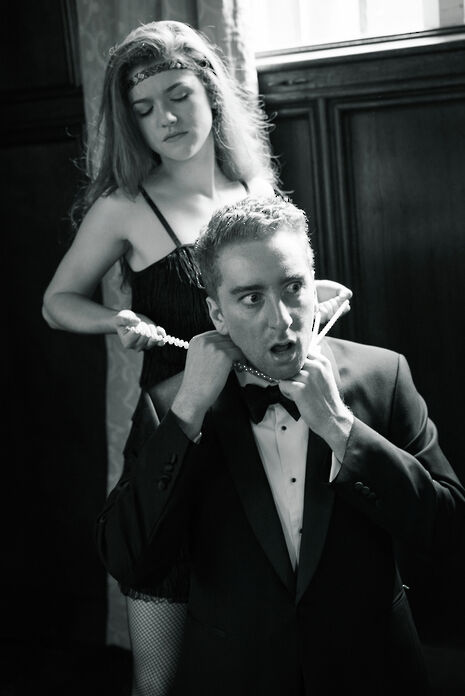Review: Arden of Faversham
Kritarth Jha is dazzled by the opulent set of Arden of Faversham and finds it an “ornate and well-acted play,” but is fundamentally underwhelmed by its plot

As Arden Of Faversham opens, you will be forgiven for thinking that you’ve come into a production of The Great Gatsby. Alice’s pink silk dress, Arden’s butter yellow tie, Mosbie’s crimson scarf, as they sit around a blue table with chairs of red leather, seem to be ripped straight out of a Wes Anderson movie and are the equivalent of strawberry ice cream for the eyes. The costumes, which are colourful, bright and extravagant while never quite being gaudy, immediately blast your retinas with colour.
I know the team of creatives have a story to tell, but I couldn’t take my eyes off their set. Characterised by such incredible detail, the bar at Arden’s home alone had at least 20 items on it. Beautiful paintings adorned the walls of the set along with a blue comforter, all of which worked to together to transport the audience, creating an atmosphere that most plays would leave only to the imagination. However, it’s all a ruse. Don’t fall for it, because the play is as grim as the darkness between the scenes.
"I know the team of creatives have a story to tell, but I couldn’t take my eyes off their set"
There’s not much in the way of plot that’s happening here. There’s the unfaithful Alice and her lover Mosbie, with murderous intentions, who, after several failed attempts, succeed at killing Arden. They are sloppy and are eventually discovered and killed. It’s basic premise is very simple and there aren’t any weak performances, but unfortunately, the plot hobbles, stumbles, falls down and breaks its neck shortly after this ornate and well-acted play begins. The play, almost immediately enters into a time loop, where Alice and Mosbie attempt to kill Arden through various means and fail miserably.

There are themes underlying the play, briefly touched upon, but that could have been drawn upon further, such as Mosbie’s ambition to climb the social ladder, of Alice feeling trapped in her relationship, of Arden feeling trapped with an unfaithful wife, each intertwined with each other, inevitably leading to their respective deaths.
Unfortunately, all that is lost as every character through the door becomes yet another attempt at killing Arden. It’s supposed to be funny, but it’s not. Each attempt feels terribly like the one that comes before it, as Black Will and Shakebag are thoroughly incompetent at getting the job done. The play feels overly long, which with slight editing could have easily been shortened. It is during these botched assassination attempts that you can let your attention wander and enjoy the beautifully crafted stage and costume.
There is no author attributed to this play, although several historians and computer scientists would shakily attribute it to Marlowe or Shakespeare or some permutation of both. I would put it entirely in the realm of possibility that after looking at how their play eventually turned out, they wanted nothing to do with it
 News / Caius mourns its tree-mendous loss23 December 2025
News / Caius mourns its tree-mendous loss23 December 2025 News / Cambridge welcomes UK rejoining the Erasmus scheme20 December 2025
News / Cambridge welcomes UK rejoining the Erasmus scheme20 December 2025 News / CUP announces funding scheme for under-represented academics19 December 2025
News / CUP announces funding scheme for under-represented academics19 December 2025 News / King appoints Peterhouse chaplain to Westminster Abbey22 December 2025
News / King appoints Peterhouse chaplain to Westminster Abbey22 December 2025 Interviews / Politics, your own way: Tilly Middlehurst on speaking out21 December 2025
Interviews / Politics, your own way: Tilly Middlehurst on speaking out21 December 2025







